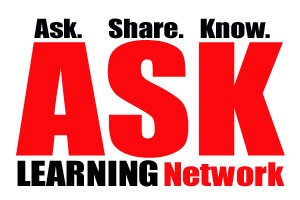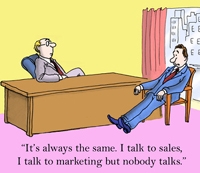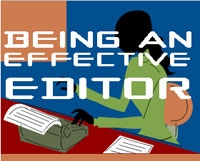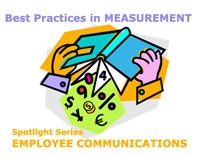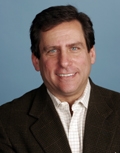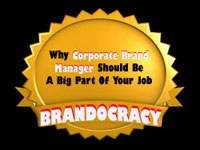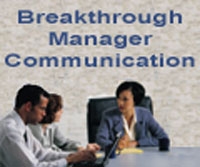Walgreen’s social intranet, The Wall, launched in 2013 and is in many ways already beginning to prove itself as a digital workplace where employees become informed, connected and engaged in a whole new way. As expected, the journey has had its challenges, and this webinar is designed to make that journey a little smoother for those on the same path.
Whether your organization is thinking about, has started or already has an internal social intranet, don’t miss this very educational “behind-the-firewall” look at what it takes to launch and build a social intranet that delivers measurable business value.
Learning topics:
- First, be realistic
- Expect and embrace disruption, and help others do the same
- Continually build the case for how your social intranet will drive business results
- Keep your key partners close, and your leaders closer
- Develop a clear, compelling, evolving communication strategy
And five more!
Presented by:
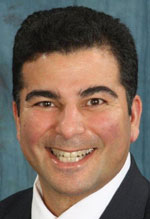 James R. Warda, Internal Communications Team Lead, Walgreens, brings a comprehensive communication background with Fortune 100 companies, including Allstate, Baxter, Boeing and Walgreens. As a Gold Quill award-winning communication leader, James focuses on achieving business results through an attention to people, both from a leadership and emotional perspective. And, as James explains, “it is this attention that builds trust, the foundation of any successful relationship – and communication effort.” James is also the author of “Where Are We Going So Fast?” and also writes a “Disney Moments” blog for celebrationspress.com. In addition, he has been a speaker and contributor for Chicken Soup for the Soul Enterprises, the “Chicago Tribune” and Pioneer Press.
James R. Warda, Internal Communications Team Lead, Walgreens, brings a comprehensive communication background with Fortune 100 companies, including Allstate, Baxter, Boeing and Walgreens. As a Gold Quill award-winning communication leader, James focuses on achieving business results through an attention to people, both from a leadership and emotional perspective. And, as James explains, “it is this attention that builds trust, the foundation of any successful relationship – and communication effort.” James is also the author of “Where Are We Going So Fast?” and also writes a “Disney Moments” blog for celebrationspress.com. In addition, he has been a speaker and contributor for Chicken Soup for the Soul Enterprises, the “Chicago Tribune” and Pioneer Press.
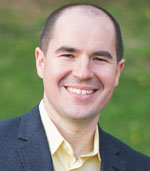 Steve Cohen, Internal Digital Content Manager, develops, manages and publishes the news and company information on all internal company portals at Walgreens, but also develops the content strategies and roadmap for the company’s new social intranet, The Wall. Steve has been with Walgreens since 2006, and with his background in journalism, he created the first non-anonymous news and executive blogs for an audience of more than 247,000 team members. His passion to connect people to information and each other also played out in his time as managing editor of Facets, an online-only, bimonthly lifestyle magazine.
Steve Cohen, Internal Digital Content Manager, develops, manages and publishes the news and company information on all internal company portals at Walgreens, but also develops the content strategies and roadmap for the company’s new social intranet, The Wall. Steve has been with Walgreens since 2006, and with his background in journalism, he created the first non-anonymous news and executive blogs for an audience of more than 247,000 team members. His passion to connect people to information and each other also played out in his time as managing editor of Facets, an online-only, bimonthly lifestyle magazine.
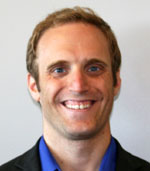 Chris Catania, Internal Social Media Manager, manages the internal enterprise social media programs and employee communities at Walgreens. Prior to joining Walgreens, he helped big brands develop and implement social media marketing and consumer-engagement initiatives. He also runs Live Fix Media, an all-consuming experiment exploring the intersection of life, live music and online communities.
Chris Catania, Internal Social Media Manager, manages the internal enterprise social media programs and employee communities at Walgreens. Prior to joining Walgreens, he helped big brands develop and implement social media marketing and consumer-engagement initiatives. He also runs Live Fix Media, an all-consuming experiment exploring the intersection of life, live music and online communities.
 Plug into an online learning network featuring 100+ hours of expert training and real-world help for busy communication, HR, marketing & PR professionals.
Plug into an online learning network featuring 100+ hours of expert training and real-world help for busy communication, HR, marketing & PR professionals.
OK, let’s do the math. If you are able to just get one key strategic question you’re struggling with figured out with the help of the brightest minds in the field, and it saved your organization X$’s the first year, and leads to you getting a pay raise or even a promotion … what is your membership worth? Or asked another way, what’s your career success worth? (Answer: way more than the $1095 annual membership). Give ASK a try and see for yourself.
Learning modules and resources on these areas:
- Communication Leadership
- Communication Skills
- Crisis Communications / Planning
- Employee Communications / Engagement
- Intranets and Internal Social Media
- Marketing, Reputation and Corporate Social Responsibility
- Measurement / ROI
- PR and Media Relations
- Social Media / Technology
Get one year access to the entire private ASK Peer Learning Network
![]() Learn at your leisure from 90+ webinar replays
Learn at your leisure from 90+ webinar replays
![]() Network and ask questions with professional peers
Network and ask questions with professional peers
![]() Attend all upcoming webinars free during your membership
Attend all upcoming webinars free during your membership
![]() 20% discount on any Communitelligence conference
20% discount on any Communitelligence conference
![]() Free subscription to weekly Comm-Digest newsletter
Free subscription to weekly Comm-Digest newsletter
ASK is designed for:
Professionals working in all disciplines including employee engagement, communication leadership, social media, public relations, marketing-branding, intranets, HR, corporate social responsibility and an expanding list of related disciplines.
Limited time offer: $1095/annual membership
Testimonials
“With mountains of information at our fingertips, we need Sherpas to help us dig a path. With ASK, we can rely on our trusted peers, supplemented with a pool of other experts, to stay on top and even ahead. What’s also great about ASK is the sharing and collaboration. One time you’re a giver of advice and the next time you’re a beneficiary.” Liz Guthridge, publisher of The Lean Communicator
“This kind of a network is long needed–in that it offers access to a proven range of opinions instead of just a common base of experience. In so doing, it stands out from a lot of the breathless blather and baby talk that one finds all too often in discussions of these crucial issues.” Mike Klein, The Intersection, Belgium
For questions, just use this form, email customerservice@communitelligence.com or call 904-588-2366. Each membership is for an individual and cannot be shared with any others. Memberships remain active if member changes jobs.
(Group memberships also available Contact us).
- Do your communication efforts tend to be “one-offs” that consume a lot of time and effort but don’t always generate the results you had hoped for?
- Do senior leaders’ eyes glaze over when you explain your latest “big idea”?
- Do you wish you had more time to spend learning about new things and less putting out fires?
While strategic planning is probably at the top of the list of things that most communicatorsdon’t want to do, the reality is that when done well, strategic planning can not only help to save time, and money, but can increase the odds of achieving desired communication outcomes. And, the good news is, effective planning doesn’t have to take weeks or months or result in dozens of meetings. In fact, the process can actually be quite simple and straightforward.
This webinar will offer easy-to-follow steps and provide practical tips and advice that can be used for any planning effort—from developing an internal communications plan to developing a marketing campaign—or even focusing on a single initiative.
What You Will Learn:
- How to position the plan for success by starting with the end in mind
- Why your mission statement is your friend
- How and why to align your efforts with your organization’s strategic plan
- A step-by-step process for developing a strategic plan
- Developing a process for plan updates – how to keep the plan alive
- How to build measurement into the plan
- How to make sure things get done!
Who Should Attend
- Communicators, PR and marketing professionals at all levels.
Presented by:
 Linda Pophal is CEO of Strategic Communications, and a marketing and communication strategist with 20+ years experience in healthcare, education and not-for-profit marketing and communications. She has managed all aspects of corporate and marketing communication including employee communication, public relations, advertising, social media, market research, brand management and strategic planning. Pophal has developed and implemented strategic business, marketing and communication plans for healthcare and educational organizations and consultants, generating measurable results based on client goals. She has developed and delivered training programs for national and local audiences on all aspects of communication management and employee relations. She is author of The Essentials of Corporate Communications and PR and Complete Idiot’s Guide to Strategic Planning.
Linda Pophal is CEO of Strategic Communications, and a marketing and communication strategist with 20+ years experience in healthcare, education and not-for-profit marketing and communications. She has managed all aspects of corporate and marketing communication including employee communication, public relations, advertising, social media, market research, brand management and strategic planning. Pophal has developed and implemented strategic business, marketing and communication plans for healthcare and educational organizations and consultants, generating measurable results based on client goals. She has developed and delivered training programs for national and local audiences on all aspects of communication management and employee relations. She is author of The Essentials of Corporate Communications and PR and Complete Idiot’s Guide to Strategic Planning.
Tell me and I may hear. Tell me and let me add my 2-cents and now it’s our decision; I’m all in. Yes, one of the most powerful and proven catalysts to engagement is simply involving employees in generating ideas that address an organization’s most pressing challenges. By opening up these important conversations to employees, individuals feel like they’re part of the business, and not watching from the sidelines.
Attend this webinar to see how a diverse range of companies are using co-creation — also called crowd-sourcing and open innovation — to achieve significant improvements in both employee engagement and business outcomes.
Borrowing from his experience working with leading companies, Preston Lewis, co-founder and director of San Francisco’s Bonfire, will explain how to use communication co-creation and audience-centricity to effectively drive creativity, innovation and employee engagement within your company.
You will learn how to:
- Position communication as a catalyst for co-creation
- Build a holistic engagement strategy, supported by multidisciplinary communications
- Use emerging crowd-sourcing technologies to drive employee engagement efforts
- Increase participation (both employee and customer) in key brand initiatives
About the Speaker:
 Preston Lewis is an expert in branding, employee engagement and internal communications. A sought-after speaker, Preston is an energetic and creative leader who helps companies understand how to solve complex problems through communication and design.
Preston Lewis is an expert in branding, employee engagement and internal communications. A sought-after speaker, Preston is an energetic and creative leader who helps companies understand how to solve complex problems through communication and design.
Preston and his team have designed and implemented communication campaigns for some the world’s largest and most successful companies, including Starbucks, Genentech, Nortel Networks, NASDAQ, and HP.
Webinar led by Katie Paine, author of Measure What Matters
The explosion in mobile commerce and communications and the arrival of contextual computing devices such as Google Glass will change forever how we communicate — and measure our communications.
Imagine a world without “how useful do you find the newsletter?” surveys and relying on employees reluctantly filling out questionnaires about what they recall or feel. That world will be populated with communications teams who will be able to measure what is most effective in real time, and tailor delivery and content accordingly.
As these technologies are adopted in organizations, organizational silos between traditional and social media, between internal and external communications between marketing, advertising and PR will all be increasingly blurred.
The growth of sponsored content, native advertising and uses of data will simultaneously make stakeholder relationships more important and measurement more challenging. This session will present attendees with an overview of specific instructions on how to define success and measure it in this new era.
What You Will Learn:
- How this will redefining every metric you’ve ever used
- How this will affect measurement research
- How to get ready for the contextual measurement revolution
- The six steps to perfect measurement in the age of context
- How new standards for measurement will drive metrics in the future
- How to use the new contextual metrics to get the ear of the board
Who Should Attend
Communicators, PR and marketing professionals at all levels.
Presented by:
 Katie Delahaye Paine has been a pioneer in the field of measurement for more than two decades. In the process she and her firms have analyzed millions of articles, conducted thousands of surveys, and read or watched countless tweets, YouTube videos and Facebook pages in order to measure the effectiveness of her client’s communications.
Katie Delahaye Paine has been a pioneer in the field of measurement for more than two decades. In the process she and her firms have analyzed millions of articles, conducted thousands of surveys, and read or watched countless tweets, YouTube videos and Facebook pages in order to measure the effectiveness of her client’s communications.
She has advised some of the world’s most admired companies and has been a leading promoter of standards in the PR and Social Media Measurement field, most recently as the initial organizer of the Conclave that released social media measurement standards in June.
She has founded two measurement companies, KDPaine & Partners Inc., and The Delahaye Group. Her books, Measure What Matters (Wiley, March 2011) and Measuring Public Relationships (KDPaine & Partners 2007) are considered must reading for anyone tasked with measuring public relations and social media. Her latest book, written with Beth Kanter, “Measuring the Networked Nonprofit, Using Data to Change the World,” is the 2013 winner of the Terry McAdam Book Award.
The profession of corporate communications is steeped with tradition. Though there are many new channels, we tend to use them to say the same old things. Employees have a multitude of ways to express themselves after hours, but at work, they tend to have much less voice. This imbalance leaves the unstated impression that all the important communications is done by the professionals.
Heather Rim, vice president of global corporate communications at Avery Dennison, and her team continually look for ways to expand employee voice and make communications fresh and fun. Blending simple ideas with the power of communication networks, her team is shaking up old ideas about what traditional communications looks like, includes and accomplishes. In this special webinar, she will show some of the unique Avery Dennison communication programs that are winning high marks from employees and leadership – and would be worth considering for your organization.
What you will learn:
- Starting with the philosophy – corporate communications should never be boring
- Behind “The Beat,” a global employee sounding board that just keeps growing
- Just launched: an intranet built on Google
- How a CEO video blog is sparking unexpected impact
- Blending formal and informal communications – Letting employees tell their own stories
- Less is more when it comes to social media policy
Presented by:
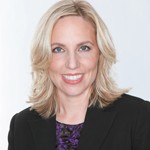 Heather Rim is vice president of Global Corporate Communications for Avery Dennison Corporation. She was named to her current position in January 2011. Heather joined Avery Dennison in 2010 as senior director, Internal Communications.
Heather Rim is vice president of Global Corporate Communications for Avery Dennison Corporation. She was named to her current position in January 2011. Heather joined Avery Dennison in 2010 as senior director, Internal Communications.
Heather is responsible for the strategic direction and management of all aspects of corporate communications for Avery Dennison including employee communications, corporate brand management, crisis communications, social media and digital communications, corporate media relations, and corporate philanthropy.
Before joining Avery Dennison, Heather held the position of vice president, Communications for the Disney ABC Television Group, where she designed and implemented global communications strategies to inform and engage employees across Disney’s entertainment and news television properties. Previously, she progressed through Corporate Communications, Marketing and Investor Relations roles at companies including WellPoint, Countrywide and KPMG.
Heather received a master’s degree in communications management from the University of Southern California and a bachelor’s degree in marketing from Azusa Pacific University. She serves on the boards of the United Way of Greater Los Angeles and the Pasadena Symphony, and is a member of the Arthur Page Society.
 Kristin Wong serves as the lead for all corporate internal communications programs and channels. She drives efforts to ensure the company’s employer brand is activated throughout key employee touch points including the enterprise portal, global employee ambassador team, values and ethics programs, and corporate town halls.
Kristin Wong serves as the lead for all corporate internal communications programs and channels. She drives efforts to ensure the company’s employer brand is activated throughout key employee touch points including the enterprise portal, global employee ambassador team, values and ethics programs, and corporate town halls.
Prior to joining the company, Kristin worked for The Walt Disney Company where she assisted in the development of internal communications programs for Disney’s ABC television business. She received a master’s degree in communication management from the University of Southern California and also holds a bachelor’s degree in media studies from Pomona College of the Claremont Colleges. Outside of work, Kristin is a blogger and pop culture junkie who’s passionate about the technology trends that will shape our digital future.
Are you tired of struggling to get—and keep—people’s attention and convince them to take action?
You can improve your ability to connect with and influence others by learning how our brain works and applying some simple techniques based in neuroscience.
Forget about right brain/left brain, an archaic concept. Instead, the “social brain” drives our thinking and our actions.
This session will briefly cover basic neuroscience principles geared toward non-scientists. We’ll then focus on how you can apply those principles to help yourself and others think better and perform at higher levels. By taking these actions, you can improve your influencing skills and actions.
Learn how to:
- Increase your self-awareness to improve your ability to influence
- Design the best environment for influencing
- Speak and write with intent to make better connections with others
- Make your messages more compelling and memorable
- Listen more effectively
- Slow down and quiet the brain to tap into the unconscious and speed up gaining insights and influencing
- Ask powerful thinking questions that increase focus and gain greater clarity
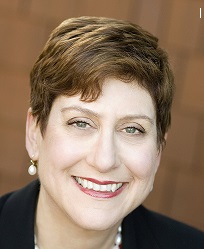 Your webinar leader, Liz Guthridge is an award-winning consultant, leadership coach and trainer who’s studied with Dr. David Rock of The NeuroLeadership Institute, Dr. BJ Fogg, founder of the Stanford Persuasive Technology Lab and other luminaries in the fields of employee communication and organizational change. Liz has extensive experience supporting leaders improve their communication, develop new habits and adapt their organizations.
Your webinar leader, Liz Guthridge is an award-winning consultant, leadership coach and trainer who’s studied with Dr. David Rock of The NeuroLeadership Institute, Dr. BJ Fogg, founder of the Stanford Persuasive Technology Lab and other luminaries in the fields of employee communication and organizational change. Liz has extensive experience supporting leaders improve their communication, develop new habits and adapt their organizations.
Liz Guthridge is an award-winning leadership coach, consultant and trainer with extensive change, employee communication and organization development experience.
As the founder of the boutique firm Connect Consulting, Liz works with leaders at all levels to help them move from blue-sky thinking to greener pastures actions. With her support, Liz’s clients enhance the clarity of their ideas, plans and actions. Her clients also improve the quality of their conversations, their ability to influence and their skill in building habits.
Liz contributed the chapter “Change Through Smart-Mob Organizing: Using Peer-by-Peer Practices to Transform Organizations” to the book The Change Champion’s Field Guide (Wiley 2013).
Besides being a certified coach in brain-based coaching, she is serving as a teaching assistant for the Executive Masters in NeuroLeadership program through the NeuroLeadership Institute co-founded by Dr. David Rock. Liz also is a graduate of Dr. BJ Fogg’s Persuasion Boot Camp and is one of his Tiny Habits™ coaches.
Ok, if we professional communicators would all come clean, we would admit we’ve been paying a lot more attention to the sexy new digital communication workplace tools than we have to that oldest but most important social medium, face-to-face communications.
Unfortunately, practice and research says ignoring manager communication is a bad idea. In the midst of so much change, workplace stress, confusion and mistrust, there is a powerful human case to be made for attending to this most basic kind of communication. Gallup research shows that “managers from hell” are creating active disengagement, costing the U.S. an estimated $450 billion to $550 billion annually.
According to ROI Communication’s annual benchmark survey:
- One in four managers is not considered a credible source of information
- Only 55% offer recognition and appreciation for a job well done
- Only 25% clearly understand their communication role (which coincides with the fact that only 27% receive communication training), and
- Only 18% are measured for communication performance in their performance reviews
Roger D’Aprix has been preaching the face-to-face communication mantra since he was a communication manager at Xerox in the late 1970s. He’s convinced today’s workers want and expects more than command and control, top-down communication. In fact, if face-to-face communication is failing, there is an excellent chance that all of the other forms of communication in the organization are also failing.
Drawing from his new book, Creating an Engaged Workforce: the Face-to-Face Communication Toolkit, Roger will arm you with the basic strategies and tools to either launch or reignite your organization’s manager communication program in ways that will prepare them to fulfill the all-important role of interpreter for their people. It’s time to fire up your face-to-face communication program.
What You Will Learn:
- Why human satisfaction with work and business success both demand a face-to-face strategy for delivering critical issues to employees
- How to build the business case and form the key team you need to seriously impact face-to-face communication in your organization
- Why too many face-to-face communication programs fail and the secret sauce of those that sing
- The key tools and processes you need to make your face-to-face communication program a winner
Presented by:
 Roger D’Aprix is internationally known as a practitioner in the theory, strategy and practice of employee communication. His ground-breaking work at Xerox Corporation beginning in the 1970s qualifies him as one of the pioneers in employee engagement. As a communication consultant, lecturer and author he has assisted scores of Fortune 500 companies in developing their communication strategies and designing their communication training.
Roger D’Aprix is internationally known as a practitioner in the theory, strategy and practice of employee communication. His ground-breaking work at Xerox Corporation beginning in the 1970s qualifies him as one of the pioneers in employee engagement. As a communication consultant, lecturer and author he has assisted scores of Fortune 500 companies in developing their communication strategies and designing their communication training.
In 1998 IABC named him ‘one of the most influential thinkers in the communication profession in the last 25 years.’ He was named an IABC Fellow, that organization’s highest honor, in 1978. For 15 years he held senior positions with two of the leading human resources consulting companies. He served as vice president and global practice leader for Towers Perrin’s human resource communication practice and as principal and service developer for Mercer Human Resource Consulting.
Before that, he led employee communication for Xerox Corporation and held executive communication positions at General Electric and Bell and Howell. Presently, in addition to his own consultancy, D’Aprix & Co., he is affiliated with ROI Communication as a member of its advisory board. ROI is a global consultancy that specializes in internal communication strategy and practice. He divides his time between residences in Rochester, New York and New York City.
A new generation of online tools can amplify the voice of business leaders and individuals and turn them into thought leaders with amazing speed.
Blogs, podcasts, digital video and social networks enable business people to bypass expensive advertising and media gatekeepers and take their messages directly to their stakeholders.
With expertise, dedication and savvy use of search engines and syndication, you can now reach a targeted audience with minimal cost and waste.
This webinar introduces the most popular social media concepts and provides step-by-step advice on how to put them to work.
What You Will Learn:
- How to choose from among more than a dozen social media options to fit the tools to your strategy
- Secrets of gaining traffic, search-engine visibility and business
- Why search engines love blogs
- How to use syndication to turbo-charge readership and awareness
- Debunking myths about ROI
- Matching social media to business strategy
- Packaging content for maximum visibility and search engine impact
- Read Q&A with Paul Gillin on social media marketing and becoming an influencer.
- Read excerpts from Secrets of Social Media Marketing
Presented by:
 Paul Gillin is a veteran technology journalist with more than 24 years of editorial leadership. Paul was founding editor-in-chief of TechTarget, one of the most successful new media entities to emerge on the Internet. Previously, he was editor-in-chief and executive editor of Computerworld. Currently, he writes the social media column for BtoB magazine. His critically acclaimed new book, The New Influencers, is about the changes in markets being driven by the new breed of online publishers. Published by Quill Driver Books in spring, 2007, it is in its third printing. His second book, Secrets of Social Media Marketing, will be published in the fall of 2008.
Paul Gillin is a veteran technology journalist with more than 24 years of editorial leadership. Paul was founding editor-in-chief of TechTarget, one of the most successful new media entities to emerge on the Internet. Previously, he was editor-in-chief and executive editor of Computerworld. Currently, he writes the social media column for BtoB magazine. His critically acclaimed new book, The New Influencers, is about the changes in markets being driven by the new breed of online publishers. Published by Quill Driver Books in spring, 2007, it is in its third printing. His second book, Secrets of Social Media Marketing, will be published in the fall of 2008.
Paul specializes in advising business-to-business marketers on strategies to optimize their use of online channels to reach buyers cost-effectively. He is particularly interested in social media and the application of personal publishing to brand awareness and business marketing.
Paul is an accomplished speaker and media spokesman. He has keynoted more than a dozen technology conferences, including annual user group meetings for IBM, Oracle, Cognos, Business Objects and J.D. Edwards. He has also spoken at scores of other events about technology trends and social media.
His ability to translate complex technology topics into plain English has made him a favorite source for journalists. He has been widely quoted in newspapers and on the airwaves, including appearances on CNN, PBS, Fox News and MSNBC.
Paul is a research fellow at the Society for New Communications Research and he chairs the social media cluster of the Massachusetts Technology Leadership Council. He blogs at http://www.paulgillin.com.
This webinar will help supervisors get the most out of their writers by creating an environment where writers develop and gain confidence, and where the focus is on the writer as much as the writing.
Practical Advice for:
- Building a collaborative relationship with writers
- Creating an atmosphere where writers develop
- Reducing the amount of time rewriting copy
- Improving editing skills
What You Will Learn:
- How to reinforce the notion that writing is valued
- How to improve communication with writers
- How to get the most out of a one-on-one conversation about performance
- How to build confidence
- How to distinguish between coaching and crisis repair
- What to do when you don’t think the writer will ever “get it”
- What to do when it becomes easier to toss the draft and write it yourself
- How to know when to make changes and when not to
- What you can do if you’re not confident
Real world questions answered:
- What processes can help avoid writer disasters at deadline?
- What do you tell a writer who’s article totally misses the mark?
- How should writers and graphic designers interact, and how often?
Instructor:
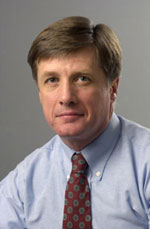 Ken O’Quinn is a professional writing coach, who conducts workshops and one-on-one coaching in Fortune 500 companies and global public relations firms. He is the author of Perfect Phrases for Business Letters (McGraw-Hill, 2006).
Ken O’Quinn is a professional writing coach, who conducts workshops and one-on-one coaching in Fortune 500 companies and global public relations firms. He is the author of Perfect Phrases for Business Letters (McGraw-Hill, 2006).
He started Writing With Clarity in the mid-’90s, following a 21-year journalism career, most of it with the Associated Press. He now works with companies such as Chevron, Campbell Soup, Visa, Intel, Eli Lilly, Raytheon, Reebok, Motorola and Sprint, and with PR firms such as Fleishman Hillard, Burson-Marsteller, Porter Novelli and Edelman. He also is a writing instructor for the National Investor Relations Institute. He works with all levels of staff and managers. Ken has been a guest speaker at the PRSA and IABC international conferences and at the American Press Institute. His writing has appeared in major U.S. newspapers and in the Harvard Management Communication Letter and the Employee Communication Management Journal.
Learn how to conduct a communication audit that will provide the hard data you and your management need to make the right decisions.
Scrambling to meet the next deadline for the employee pub. Running e-mail copy through the approval ringer. Tying up all the logistical loose ends for next week’s town hall meeting. There’s plenty to keep you busy when you work in employee communications. But are you sure the tactics you’ve chosen are the best ones for reaching employees? And what about strategy? What do employees really need to know to do their jobs?
Before you spend scarce company resources on employee communications, you’d better know the answers to these and many other questions. And a communication audit can give you those answers.
Why a communications audit? How does it work? How can it help boost the bottom line? Where to focus? What to ask?
This session answers all these questions, plus gives you an inside look at how one company audited its employee communications program, what they learned and how they applied their learnings. Hear from the communicator who led the project and the measurement experts who helped her succeed.
In just 90 minutes, you’ll learn how to conduct a communication audit that will put your program on the right track.
Key learning topics:
- How to make the decision to conduct a communication audit — often the most difficult step in the process — and how to sell management on the idea
- How to know what communication issues to focus on
- How to write powerful questions that reveal the most useful information
- How to analyze data, so you know the most important items to act on
- How to develop and implement a plan of action — the greatest benefit of a communication audit
Plus: Robert, Katrina and Kim answer real-world questions on:
- The pros and cons of Web surveys vs. paper
- The percentage of responses should you expect in a survey and how to ensure a statistically significant number of responses
- Recommendations on alternate communication channels, such as blogs and wikis
- How to learn if your employees really want to end their employee newsletter
- The real costs behind a communication audit
About your seminar leaders:
 Robert Holland, ABC, Holland Communication Solutions, has more than 17 years of experience in organizational communications, including employee communication planning, publication management, consulting, media relations and change communication. He is co-leader of the Communitelligence Internal Communications community and a frequent contributor to several national and international professional journals, including the Journal of Employee Communication Management. His column “Communication at Work” appears on the Business Channel of Richmond.com every two weeks. He is author of Prove Your Worth: The Complete Guide to Measuring the Business Value of Communication, published by Ragan Communications. Robert earned IABC accreditation in 1992. His bachelor’s degree in mass communications is from Virginia Commonwealth University in Richmond, Va.
Robert Holland, ABC, Holland Communication Solutions, has more than 17 years of experience in organizational communications, including employee communication planning, publication management, consulting, media relations and change communication. He is co-leader of the Communitelligence Internal Communications community and a frequent contributor to several national and international professional journals, including the Journal of Employee Communication Management. His column “Communication at Work” appears on the Business Channel of Richmond.com every two weeks. He is author of Prove Your Worth: The Complete Guide to Measuring the Business Value of Communication, published by Ragan Communications. Robert earned IABC accreditation in 1992. His bachelor’s degree in mass communications is from Virginia Commonwealth University in Richmond, Va.
- Katrina Gill is president and founder of Gill Research LLC, a full-service research and consulting firm specializing in communication metrics, audits and employee/organizational research. Katrina has more than 14 years of diverse research experience, from the planning and development of projects through the presentation of results and recommendations for action. Katrina is formally educated in research methodology and has completed post-graduate study on a doctoral track in clinical psychology at the University of Missouri. A frequent speaker, workshop leader and author on strategic research and measurement, Katrina has taught undergraduate and graduate-level courses. She is a member of the American Marketing Association and the International Association of Business Communicators.
- Kim Hall is a communications consultant with Wells Fargo & Company, supporting internal communications for a division of 5,500 employees. She partners with managers in business units, human resources, marketing and public relations to develop integrated communication strategies that help the organization meet its goals. With 10 years in communications in the corporate and nonprofit sectors, Kim has worked on fundraising campaigns, grant writing, newsletter production, change communications and communications measurement. She has a bachelor’s and a master’s degree in English and is a member of the International Association of Business Communicators.
Communicators have been using PR to deliver value for decades. What’s new is that a handful of leading professionals are now scientifically proving how they are generating measurable benefits from the public relations activities. The progress that this change represents is significant: rather than relying on subjective perceptions of what represents value, they are applying the concept of “return on investment” (ROI) and objectively measuring the economic benefits of public relations activity against its associated costs. In this perspective-packed web conference, Mark Weiner offers a research-based model for creating and implementing public relations programs that will generate meaningful results and improve an organization’s ROI. You will also learn how to speak to senior executives in a way that will improve communications and ultimately help strengthen PR performance and results.
What You Will Learn:
- The Difference between “proving value” and “delivering a return-on-investment.”
- The three elements of PR-ROI
- What some of the world’s greatest organizations are doing to prove and improve their PR-ROI (and how they do it)…including branded case studies
- How you can take your PR programs to the next level in clearly demonstrating ROI
- What’s required to go beyond “ROI
Real-world questions that will be answered:
- How do I prove the value of my PR?
- What is the difference between “proving value” and “delivering ROI?”
- How do I connect our PR to meaningful business outcomes and Return-on-Investment?
- What are the three forms of PR-ROI?
- What are companies doing now to deliver and improve their ROI?
- How do I get started?
Presented by:
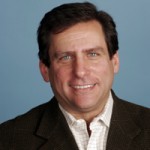 Mark Weiner is the author of “Unleashing the Power of PR: A Contrarian’s Guide to Marketing and Communication,” published by John Wiley & Sons. Throughout his career, Mark has focused on providing research-based consulting to help clients improve their PR-ROI. Most recently, Mark was the SVP/Global Director of Research at Ketchum after having been president and CEO of Delahaye, the preeminent provider of research solutions for public relations and corporate communications professionals. Mark is a frequent speaker at conferences including those produced by The Conference Board, The American Marketing Association, The PRSA, The IABC and Bulldog Reporter, and he frequently contributes to publications such as Communication World, PR Week and The Daily ‘Dog and has appeared on PBS and CNBC. He is on the editorial advisory boards of PR News and PRSA’s The Strategist, and is an active member of the Institute for Public Relations, for whom he chaired the Measurement Commission in 2004.
Mark Weiner is the author of “Unleashing the Power of PR: A Contrarian’s Guide to Marketing and Communication,” published by John Wiley & Sons. Throughout his career, Mark has focused on providing research-based consulting to help clients improve their PR-ROI. Most recently, Mark was the SVP/Global Director of Research at Ketchum after having been president and CEO of Delahaye, the preeminent provider of research solutions for public relations and corporate communications professionals. Mark is a frequent speaker at conferences including those produced by The Conference Board, The American Marketing Association, The PRSA, The IABC and Bulldog Reporter, and he frequently contributes to publications such as Communication World, PR Week and The Daily ‘Dog and has appeared on PBS and CNBC. He is on the editorial advisory boards of PR News and PRSA’s The Strategist, and is an active member of the Institute for Public Relations, for whom he chaired the Measurement Commission in 2004.
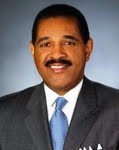 By Ralph Reid, VP, Corporate Social Responsibility and President, Sprint
By Ralph Reid, VP, Corporate Social Responsibility and President, Sprint
Presented at Communicating Sustainability 2010, organized by Communitelligence
Speakers included: Michael Splinter, Chairman and CEO of Applied Materials; Matthew Bishop, author of Philanthrocapitalism; Dave Stangis, Vice President, CSR/Sustainability at Campbell Soup Company; Gil Friend, CEO of Natural Logic; Steve Lippman, Director of Environmental Strategy at Microsoft; Judah Schiller , Co-founder and CEO of Saatchi & Saatchi S, North America; Amy Skoczlas Cole, Director of the eBay Green Team; Shel Horowitz, ethical/green strategist; Christine Arena, CEO of sparkUp; Lindsey Held Bolton, Senior Director of Sustainability Global Communications at SAP; Ralph Reid, Vice President, Corporate Social Responsibility at Sprint; Laura Rodormer, Director of Corporate Citizenship for McKesson; and Bruce Klafter, Managing Director, Environmental, Health and Safety at Applied Materials.
Sometimes it’s good to step back and have someone help you re-think your strategy.
That’s why we asked Christopher Barger, author of the new book, Social Media Strategist, to peel back the social media strategy onion. He has labored in the social media trenches at two big corporations (IBM and GM). He knows the potholes to avoid and the things you can’t skip over.
In this special webinar he will be sharing the critical questions, decisions and maneuvers you must choreograph to bring true business value to your social media efforts.
Don’t miss this no-nonsense, cut-to-the-chase learning event, and if possible, attend with your entire team.
What You Will Learn:
- Who should own social media
- What internal potholes keep most social media efforts from truly taking off
- What departments and roles are critical to create a social marketing power team
- What are are the seven elements to a winning social media program for corporations and organizations
- Why organizations need to become content publishers to succeed in social media, and what that means
- How can a big company work effectively with bloggers to get social media results
- How to build a fire-proof social media crisis team and process
- How to create well-defined metrics and use the right tools to measure them
Presented by:
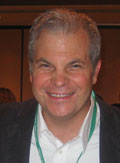 Christopher Barger is senior vice president of global programs at Voce Connect. He works with clients around the world to develop and execute social media strategies. Before joining Voce, he built and led GM’s social media program from 2007-2011 where he learned not only about how to build a corporate social program but about managing crises online. Before GM, he was IBM’s first “Blogger-in-Chief” for two years. His book, “The Social Media Strategist,” (McGraw-Hill, fall 2011) focuses on the unique challenges of building a social media program at a large brand or organization. Barger writes “The Social Media Report” for Forbes.com, where he covers the challenges companies are facing as they navigate the social web, trends and emerging technologies as they affect businesses and big brands, and how implementing social web tactics as part of your overall strategy can supplement and enhance your communications and marketing efforts.
Christopher Barger is senior vice president of global programs at Voce Connect. He works with clients around the world to develop and execute social media strategies. Before joining Voce, he built and led GM’s social media program from 2007-2011 where he learned not only about how to build a corporate social program but about managing crises online. Before GM, he was IBM’s first “Blogger-in-Chief” for two years. His book, “The Social Media Strategist,” (McGraw-Hill, fall 2011) focuses on the unique challenges of building a social media program at a large brand or organization. Barger writes “The Social Media Report” for Forbes.com, where he covers the challenges companies are facing as they navigate the social web, trends and emerging technologies as they affect businesses and big brands, and how implementing social web tactics as part of your overall strategy can supplement and enhance your communications and marketing efforts.
Surprisingly, there is no defined background or career path for those who aspire to the position of global corporate brand manager. Public relations and corporate communications practitioners often believe they have the right to be the strongest voice in determining the brand. After all,among the responsibilities of the most senior public relations (PR) executive is that of promoting and protecting the reputation of the corporation.
But at a time when global brands are valued in the billions, there is a dearth of good practical advice on what business professionals from many areas could and should be doing to build and protect their organization’s brand. And everyone from designers to lawyers to marketers to advertisers and even HR professionals can and should be playing a role. Nothing is more important than living the brand.
This webinar offers a chance to hear Michael Morley discuss themes from his new book, The Global Corporate Brand Book. He will show how corporate brand value can be measured in finite terms and encourages PR people to aspire to the role of corporate brand managers. This way their own work’s importance will be recognized and funded. But before this can be achieved, they will need to widen their knowledge beyond traditional PR techniques.
What You Will Learn:
- The six critical elements of a global corporate brand
- Case histories of successful global corporate brands
- The role of corporate communications in corporate brand building
“Presenter was extremely knowledgeable, presented well and used some excellent examples. He dug far deeper into branding and reputation management than I have ever seen or heard. His laying out of the six Vs was creative, sensitive and well done.”
Presented by:
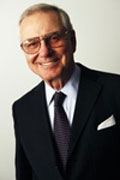 Michael Morley is president of Morley Corporate Consulting, a firm of management consultants in corporate reputation and branding. For nearly 40 years Morley worked at Edelman helping establish it as the world’s largest independent PR agency. He founded the agency’s first overseas office, in London in 1967. He went on to be named President of Edelman International Corporation and established other Edelman offices in Europe, Canada , Asia Pacific and Latin America . Since 1984 he has been based in New York.
Michael Morley is president of Morley Corporate Consulting, a firm of management consultants in corporate reputation and branding. For nearly 40 years Morley worked at Edelman helping establish it as the world’s largest independent PR agency. He founded the agency’s first overseas office, in London in 1967. He went on to be named President of Edelman International Corporation and established other Edelman offices in Europe, Canada , Asia Pacific and Latin America . Since 1984 he has been based in New York.
Morley has managed multi-national PR programs for companies that include UPS, AMADEUS Global Travel Distribution, NCR, VISA International, British Airways, Ernst & Young, Hoffmann-La Roche, Schering Plough, Procter & Gamble , S.C. Johnson and Hertz Corporation. From 1995 to 1998 Morley was President of Edelman New York and from 1998-2001 was Deputy Chairman and President of International Operations. He served as Deputy Chairman of Daniel J. Edelman Inc until his retirement in 2006.
He is also Chair of the Senior Advisory Board Experts (SAGEs) of the Echo Research Group and adjunct professor teaching in the Master of Science in PR and Corporate Communications program at New York University.
Before joining Edelman, Morley had served as an officer in the Royal Artillery and after a period in journalism had been a director of another British PR firm for seven years. He is a Fellow of the Chartered Institute of Public Relations, lectures extensively on PR, holds the CAM Diploma and in 1981 was elected to a Fellowship in the organization that is responsible for P.R. education and examinations in Britain . He served as Chairman of the jury of the IPRA Golden World Awards from 1999-2002. In June 2003 Morley was awarded the Alan Campbell-Johnson Medal for distinguished service to International Public Relations by The Institute of Public Relations. Later the same year he was one of the first six PR leaders named to the ICCO Hall of Fame.
Study after study confirms the link between good manager communication and engaged employees. Listen to this webinar and learn what managers can do to become better communicators – and stronger leaders. You’ll learn how managers can change employee attitudes and behaviors, the type of information employees demand, and which communication resources leading organizations provide managers. You’ll leave the session with practical tips, tools and frameworks that managers can apply immediately and insights into what separates outstanding managers from the rest.
What You Will Learn:
- Communication competencies every manager needs
- How to keep managers and employees informed and engaged
- Winning managers’ support for communication
- The best way to alienate managers
- How to convey information, field challenges and brainstorm solutions – in under 15 minutes
Questions that are answered:
- What are leading organizations doing to enhance manager communication?
- What feedback should communicators solicit from managers?
- What do employees want most from their managers?
- What can communicators do to help managers succeed?
Who Should Attend:
- Communications professionals who want to enhance their partnership and value to the business
- First line supervisors and managers who want to take their staff communications to the next level
Instructor:
 Andy Szpekman provides human resource management and communication research, strategies and tools to improve business performance. His clients include Bank of America, BC Hydro, Cardinal Health, McKinsey & Co., Microsoft, News Corporation, Scholastic and Wachovia.
Andy Szpekman provides human resource management and communication research, strategies and tools to improve business performance. His clients include Bank of America, BC Hydro, Cardinal Health, McKinsey & Co., Microsoft, News Corporation, Scholastic and Wachovia.
Earlier in his career, he led HR communication at Bank of America, served as communications manager for a global division of Warner-Lambert, and was a senior HR and communications consultant with Brecker & Merryman, Inc.
Andy is active in the Council of Communication Management and a former Officer of the Metropolitan New York Association of Applied Psychology. His work has been featured in national news and business publications and leading trade journals. He holds a B.A. in psychology from William Paterson University and an M.A. in organizational psychology from Columbia University.


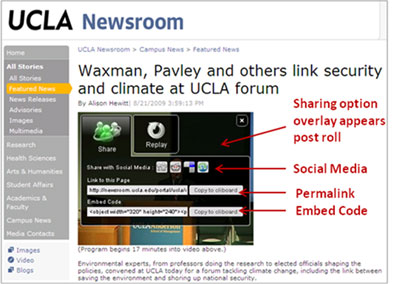 Online newsrooms have virtually replaced dual pocket, press kit folders stuffed with hard copy. But according to research, poorly designed online newsrooms damage corporate reputations. Find out if your online newsroom is hurting or helping your efforts to manage your organization’s reputation, and learn what you can do to improve the news and information section of your website through search engine optimization, RSS, email alerts, text notifications and GML. And find out how forward-thinking brands are engaging strategically with their stakeholders through social media, but converting those interactions to transactions on their own websites.
Online newsrooms have virtually replaced dual pocket, press kit folders stuffed with hard copy. But according to research, poorly designed online newsrooms damage corporate reputations. Find out if your online newsroom is hurting or helping your efforts to manage your organization’s reputation, and learn what you can do to improve the news and information section of your website through search engine optimization, RSS, email alerts, text notifications and GML. And find out how forward-thinking brands are engaging strategically with their stakeholders through social media, but converting those interactions to transactions on their own websites.
What You Will Learn:
- Best practices for online newsroom design and maintenance
- How to integrate social media into online newsrooms
- Reg FD compliance via online newsrooms
- Future trends in online newsroom design
Presented by:
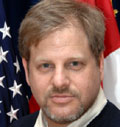 Eric Schwartzman is a senior communications professional with broad experience in online communications, public relations, public affairs and marketing for leading brands, start-ups, non-profits and government agencies. I help organization develop and execute digital communications strategies and have extensive experience integrating emerging information technologies into organizational communications.
Eric Schwartzman is a senior communications professional with broad experience in online communications, public relations, public affairs and marketing for leading brands, start-ups, non-profits and government agencies. I help organization develop and execute digital communications strategies and have extensive experience integrating emerging information technologies into organizational communications.
In 2000, I resigned from the Interpublic Group [NYSE:IPG] PR firm Rogers & Cowan, where I served as director of promotions managing a staff of nine, and went out on my own to specialize in online communications. Since then, I have developed online communications strategies, training programs and campaigns for Boeing, Brigham Young University, City National Bank, Environmental Defense Fund, Johnson & Johnson and many others.
Building on my experience managing pressroom activities at The Grammy Awards, and working in pressrooms at the MTV Music Video Awards, MTV Movie Awards, FOX Teen Awards, the People’s Choice Awards and other special events, I built the first online newsrooms for Cirque du Soleil and the Salt Lake Olympics to efficiently distribute press materials and high resolution photographs online. This led to the development and creation of online newsroom software as a service provider iPressroom, which I founded, and which today hosts online newsrooms for Target, Toyota, UCLA and others on a proprietary content management system designed specially to help nontechnical personnel practice online communications autonomously from IT professionals or webmasters. I remain the company’s chairman, participating at the board level, and advising on matters of corporate finance and business strategy.
My podcast, On the Record.Online, has received numerous awards including the Public Relations Society of America Bronze Anvil Award in 2007, the Marketing Sherpa Email Marketing Award in 2007, the MarCom Gold Award in 2007, the PR News Platinum Award in 2007, the Public Relations Society of America Los Angeles Chapter Prism Award 2007 and the Society for New Communications Research Award of Excellence in 2006. Complete bio
“This is the best seminar that I have attended in a long time. The speaker was thorough, pragmatic and interesting. He opened up a whole new vision of possibilities for a Newsroom.”
“It was a very meaty webinar – wish it could’ve been a little longer.”
“It gave me a solid overview of current thinking, trends and research regarding online newsrooms. We are an organization that relies on our online newsroom considerably, and we’re in the process of renovating it. This information will improve its offerings significantly.”
Should you roll your own social network? If yes, how do you build it so they will come, and take action?
Presented by:
 Mike Bonifer, writer, director, producer and author of GameChangers. The author of GameChangers – Improvisation for Business in the Networked World, and the co-founder of GameChangers, LLC, Mike Bonifer has consistently been in the forefront of emergent media in the workplace.
Mike Bonifer, writer, director, producer and author of GameChangers. The author of GameChangers – Improvisation for Business in the Networked World, and the co-founder of GameChangers, LLC, Mike Bonifer has consistently been in the forefront of emergent media in the workplace.
A graduate of the University of Notre Dame with a degree in Business and Philosophy, he has been a writer, director, producer and creative executive in entertainment and the internet for most of his career.
Beginning with his work as the publicist for the motion picture TRON, and his association with Toy Story, through a stint as the Chief Storyteller for 2007’s Live Earth concerts for the environment, his work at the edges of emerging business cultures has given him tremendous insight into the creation of wealth in the Networked World.
Past and present clients include The Walt Disney Company, JohnsonDiversey, DreamWorks, Frito-Lay, Mountain Dew, Hot Topic, Smithsonian Online, and a host of smaller, innovative new media companies like Pandora, ignition, Twelve Horses and myPractice.
In creating GameChangers, he has produced a curriculum that helps organizations and individuals communicate, learn and transform.
 Wendy Cohen, Director, Digital Campaigns & Community, Participant Media. Wendy led the social action campaign for Waiting for Superman.
Wendy Cohen, Director, Digital Campaigns & Community, Participant Media. Wendy led the social action campaign for Waiting for Superman.
Wendy Cohen joined Participant in November of 2007 as the Manager of Community and Alliances and the founding editor of the TakePart.com blog. Wendy has developed innovative online and mobile initiatives for Charlie Wilson’s War, The Visitor, Food, Inc. and The Cove. She shepherded the digital component of the social action campaign for Waiting for “Superman”
Wendy was born and raised in Montreal and graduated first in her class from Concordia University’s Communications and Culture Studies program. Prior to Participant, Wendy was the first Community Manager for The Huffington Post in New York City and she co-founded the Screening Liberally film series, of which she remains the National Director. A native of Montreal, Wendy began her work in film in 2004 as the Programmer and Outreach Coordinator for the Media That Matters Film Festival and Media That Matters: Good Food project.. She also worked as the researcher and creative assistant on The Art of the Documentary (New Riders Press) and served as co-chair on the Urban Pathways Young Professional Board. She has been the co-curator of the Netroots Nation screening series since 2007 and continues to be a guest lecturer and panelist at festivals and schools around the country. In 2009, Wendy produced “Every Third Bite”, an award-winning short documentary about bees hailed as a “better bee movie” by New York Magazine. Wendy is a recipient of the 2010 New Leaders Council’s 40 Under 40 Leadership Award.
Internal Social Networks are starting to appear inside some organizations. Early adopters are finding positive business results by helping employees connect through “internal Facebooks.” By effectively harnessing these new networks, organizations are seeing positive impacts on internal brand building, as well as employee engagement, satisfaction and motivation — which leads to higher levels of productivity, revenue, and profit.
But the world of the internal social network is the opposite of command & control. That said, reasonable guidelines, a group of informal influencers, and a posse of community managers who help keep the dialog lively and the network on track.
It’s clear that no matter where your company is on the social media ladder, social networks and Web 2.0 skills are becoming a part of today’s work landscape. All businesses need to be aware of how to deploy networks for higher ROI, collaboration, innovation and customer service.
Listen to this webinar replay to learn what works and what doesn’t in this brave new world of internal social networks from companies that are already figuring out the path to success.
What You Will Learn:
- How to avoid pitfalls and leverage opportunities as you venture into the world of building and managing social networks and a Web 2.0 savvy workforce
- How best to overcome cultural barriers and introduce social networks into traditional organizations
- How to handle the sensitives of employee privacy; governing participants’ behavior; and ensuring that participants balance professional and social time.
- How to set up strategic, internal alliances which mitigate concerns of Command & Control leaders and help build positive momentum
Reasons to Learn About Internal Social Networks
- Get more out of your existing resources by finding, unlocking, and engaging hidden employee intellectual capital Reduce company cost, waste, travel expenditures, and carbon footprint
- Establish, grow and maximize a culture savvy with social networks.
- Further your PR and Branding dollars by unleashing the silent experts that exist within your companies today
- Enhance your employees’ motivation and satisfaction in your company as a place to work
- Develop products and offerings faster, without regard to organizational silo or organization
- Build a more sustainable company which should well serve your shareholders for years to come
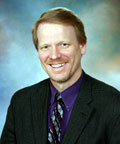 Lee Aase is manager of Syndications and Social Media for Mayo Clinic. His team’s focus is developing quality medical news resources for mainstream media, and using social media applications to create more in-depth, extended relationships directly with key stakeholders. You can see examples of Mayo Clinic’s social media offerings through the Mayo Clinic News Blog at http://newsblog.mayoclinic.org/
Lee Aase is manager of Syndications and Social Media for Mayo Clinic. His team’s focus is developing quality medical news resources for mainstream media, and using social media applications to create more in-depth, extended relationships directly with key stakeholders. You can see examples of Mayo Clinic’s social media offerings through the Mayo Clinic News Blog at http://newsblog.mayoclinic.org/
By night, Lee is Chancellor of Social Media University, Global (SMUG), a free online higher education institution that provides practical, hands-on training in social media for lifelong learners. Visit SMUG.
Prior to joining Mayo Clinic in 2000, Lee spent more than a decade in political and government communications at the local, state and federal level. He received his B.S. in Political Science from Mankato (Minn.) State University in 1986.
 Polly Pearson is VP Employment Brand and Strategy Engagement, EMC Corporation.
Polly Pearson is VP Employment Brand and Strategy Engagement, EMC Corporation.
Polly Pearson is an employment branding leader passionate about Web 2.0 engagement tools with nearly twenty years of FORTUNE 500-level experience spanning marketing, human resources, branding, investor relations, public relations, advertising, and professional speaking.
Her employment branding work has recently been featured in media outlets such as CBS News, National Public Radio, Financial Times, Boston Herald, Dice.com and in the new Penguin Press business book, “Closing the Engagement Gap; How Great Companies Unlock Employee Potential For Superior Results.”
Her leadership in Investor Relations contributed to EMC being the NYSE Stock of the Decade for the 1990s, when it outperformed all other listed stock and increased in value nearly 90,000 percent. Polly was the first woman at EMC to be promoted to Vice President. Polly writes a popular blog dedicated to careers, culture and cool.
 Paul Pedrazzi heads a small team of professionals (AppsLab) focused on emerging technology and novel business practices. Most recently, his interest has been on Web 2.0, Enterprise 2.0 and the transformation of the enterprise in light of these new modes of operation. Additionally, Mr. Pedrazzi spearheaded the creation of Oracle’s first two social network projects; Connect for internal users and Mix for customers, partners and media. Before heading AppsLab he ran product strategy for PeopleSoft’s Portal Product Suite, catapulting the flagship product into the leadership position in Gartner’s annual product evaluation. Prior to PeopleSoft, Mr. Pedrazzi held various other product strategy, marketing and consulting roles in organizations such as Deloitte & Touche LLP and Groundswell, Inc. Mr. Pedrazzi holds a BS in Managerial Economics from the University of California at Davis.
Paul Pedrazzi heads a small team of professionals (AppsLab) focused on emerging technology and novel business practices. Most recently, his interest has been on Web 2.0, Enterprise 2.0 and the transformation of the enterprise in light of these new modes of operation. Additionally, Mr. Pedrazzi spearheaded the creation of Oracle’s first two social network projects; Connect for internal users and Mix for customers, partners and media. Before heading AppsLab he ran product strategy for PeopleSoft’s Portal Product Suite, catapulting the flagship product into the leadership position in Gartner’s annual product evaluation. Prior to PeopleSoft, Mr. Pedrazzi held various other product strategy, marketing and consulting roles in organizations such as Deloitte & Touche LLP and Groundswell, Inc. Mr. Pedrazzi holds a BS in Managerial Economics from the University of California at Davis.
Who Should Purchase:
- Individuals responsible for employee communications, public relations, IT, corporate affairs, human resources, media relations, and issues management.
“The two case studies were excellent. Polly was a wonderful presenter; Paul was good too.”
“We’re in the process of developing a number of employee engagement communities so very timely.”





